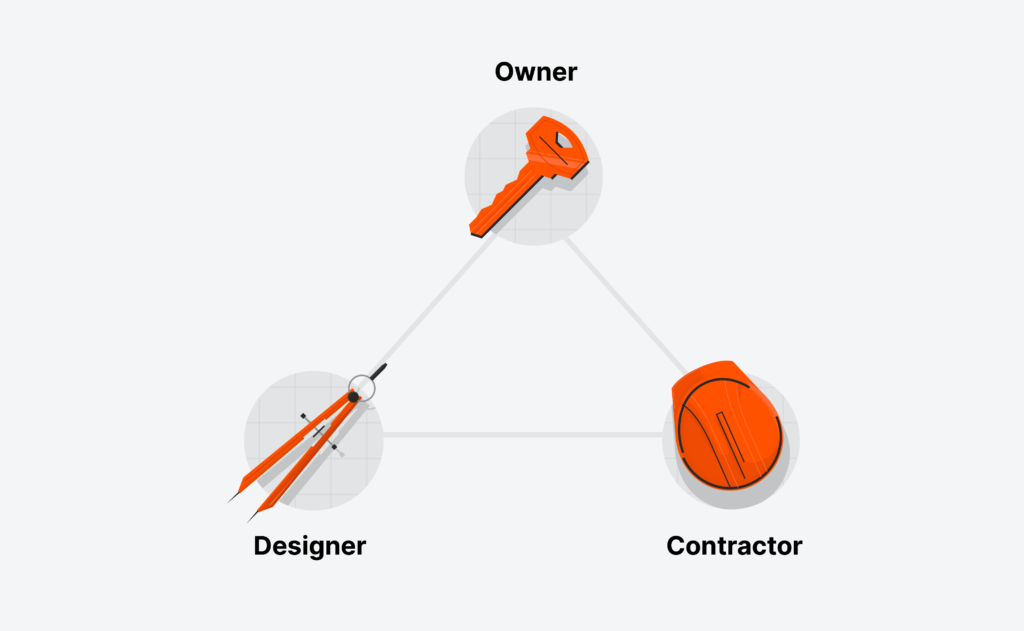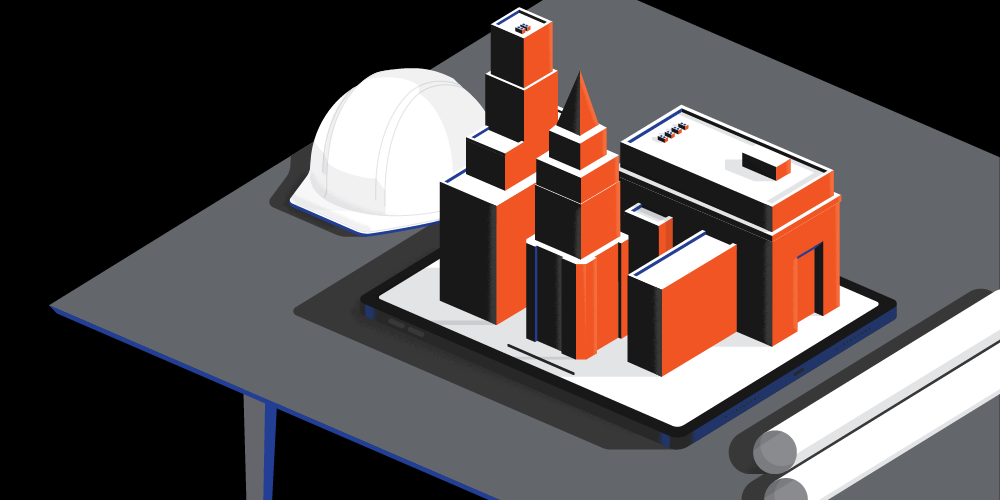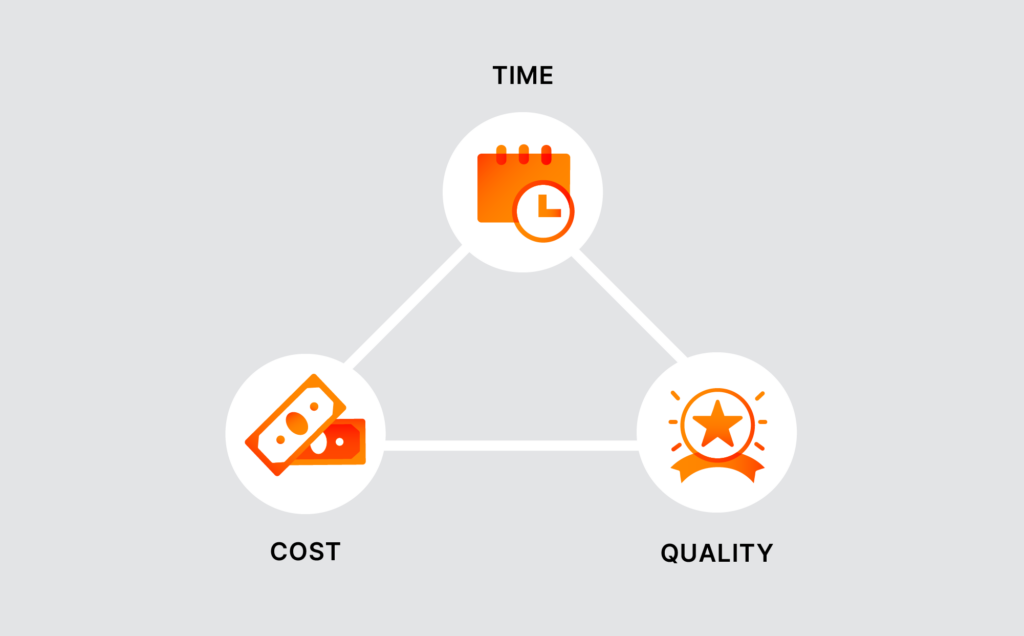— 7 min read
Building High-Performing Construction Teams for Project Success
Last Updated Nov 4, 2024
Last Updated Nov 4, 2024

Success in Australia and New Zealand's evolving construction landscape isn’t just about innovative designs or solid foundations—it’s about building a top-tier team. When every member is skilled, aligned, and driving toward the same goal, that’s when the real magic happens.
Table of contents
Key Players in a Project Team Structure
Each project is unique, but in general most projects have a few major construction stakeholders that can be bucketed into three primary groups: Owners, Designers, and Head Contractors. We call this group the Project Team. This lineup forms the core of any best in class project management team structure.

1. Owner
The owner is also known as the client or the developer. Whether it’s a person, company, or a group, they’ve got the vision, the business need and the budget, and they’re often the catalyst for a project.
They give the project its direction, take on the big risks, and at the end of the day, they give the all-important thumbs up. Often, Owners will build out the team through the tendering process, where they will create partnerships with people who can bring their project to life.
Pro Tip
Building rapport with your engineers is crucial for project success. Maintain open communication and involve them in project discussions to leverage their expertise fully, ensuring your construction is safe, functional, and visually appealing.
2. Design Team
Comprising architects and engineers, this team ensures that aesthetic aspirations align with practical execution. Here’s a breakdown of some of its key players:
Architect
The player who translates the client’s dreams into construction plans and specifications. They craft initial concepts, working with the owner in the design phase to marry aesthetics with functionality while abiding by building regulations. As a bridge between the client and the construction team, architects collaborate with engineers and frequently visit sites to ensure the design’s integrity remains intact.
Engineers
These are systems-oriented roles in bringing the architect's vision to life. Specialising in various disciplines—structural, civil, mechanical, and electrical—they ensure that every aspect of the project is meticulously planned and executed. Regular and open communication among architects, engineers, and contractors is vital to maintain the design's integrity and practicality throughout the construction process.
Pro Tip
Quantity surveyors are also one of the few professions recognised by the Australian Tax Office (ATO) as qualified to determine the depreciation value of items.
3. Head Contractor
The head contractor is pivotal in the execution phase of a construction project. Their team typically includes:
Project Manager (PM)
Charting everything from beginning to end while setting the project scope and deliverables, the PM syncs with all stakeholders and ensures that the project stays on schedule and to budget. Their communication skills are second to none, enabling them to keep everyone informed and aligned.
Quantity Surveyor
This is a specialist in estimating and managing costs. But, they go beyond mere number-crunching. They evaluate project feasibility and scan for potential risks. As experts in value engineering, they’re always on the lookout for wallet-friendly alternatives without sacrificing quality.
The Site Foreman
The person always there, watching the crew, ensuring everything’s up to par and quality isn’t compromised. They tackle on-site challenges, while prioritising safety and resource use. As mentors, they uplift junior staff while efficiently coordinating between trades.
Construction Workers and Tradespeople
These are the key players who transform plans into tangible structures. Their hands-on expertise, from pouring concrete to installing electrical systems, is invaluable. Involving them in team discussions allows for practical insights and problem-solving, enhancing overall project outcomes.
Team Challenges in the Construction Process
While each player has an important role, collaborative challenges often arise, and in the world of construction, effective teamwork is crucial for success. By examining these common pitfalls, we can identify strategies to overcome them and promote efficient workflows.
The greatest challenge in construction isn't the technical complexity—it's bridging the communication gaps between diverse teams. True collaboration happens when people work seamlessly, despite their different roles and perspectives.
Michelle Stack
Senior Strategic Product Consultant
Procore
| Challenge | Solution |
|---|---|
| Communication Breakdown One of the most significant challenges in construction is the potential for miscommunication among team members. Misunderstandings can arise from jargon, unclear instructions, or information being siloed, leading to errors that affect timelines and budgets. | To combat communication breakdowns, leverage real-time collaboration tools to promote transparency and ensure that everyone has access to the latest information, keeping all stakeholders informed and engaged. |
| Design Misalignment When architects and engineers work in isolation, their designs may overlook practical considerations that builders face on-site. This disconnect can result in impractical designs, leading to costly adjustments during construction. | Implement collaborative software, such as Building Information Modeling (BIM), to allow stakeholders to visualise the project together from the outset. This approach helps ensure that designs are both innovative and executable, reducing the likelihood of delays. |
| Role Clarity Lack of clarity regarding roles and responsibilities can lead to confusion and inefficiencies. Team members may be unsure of their specific duties, resulting in duplicated efforts or important tasks being overlooked. | Clearly define roles at the start of the project and utilise project management tools to outline responsibilities and deadlines. |
| Safety Compliance Maintaining safety compliance is paramount in construction, but it can be challenging, especially when teams are spread across various sites. Neglecting safety protocols can result in accidents, legal issues, and low morale. | Prioritise safety training and ensure that all team members have access to safety resources. Mobile apps providing instant access to safety guidelines and enabling real-time reporting of hazards can significantly enhance compliance and safety culture on-site. |
| Resource Allocation Effective management of labour, materials, and timelines is crucial. Poor resource allocation can lead to delays, cost overruns, and compromised quality. | Utilise technology to track resources and ensure they are allocated efficiently. This allows project managers to monitor inventory levels, labour availability, and project timelines, enabling timely adjustments as needed. |
| Post-Construction Follow-Up After completing a project, inadequate communication during the post-construction phase can leave unresolved issues that impact client satisfaction and future projects. | Document the entire project digitally to ensure all changes and decisions are recorded. This transparency fosters accountability and enhances communication with clients during the handover process, paving the way for future collaboration. |
Addressing these issues with clear communication, the right technology, and a commitment to safety helps streamline workflows, improve efficiency, and boost project outcomes.
Strategies for Building a High-Performing Construction Team
A stellar construction team is more than the sum of its parts — it’s about how you piece them together. Here are strategies to enhance team performance and set your crew up for greatness:
Building a high-performing team is about creating a culture where every team member feels valued and empowered to share insights. When team dynamics are strong, project outcomes tend to follow suit.
Michelle Stack
Senior Strategic Product Consultant
Procore
1. Master clear communication.
Effective communication is vital to preventing misunderstandings that can derail projects. Encourage regular check-ins and the use of accessible tools to keep everyone informed and engaged.
2. Put safety first.
Prioritising safety training not only reduces accidents but also builds trust within the team, enhancing morale and productivity.
3. Cultivate strong leadership.
Good leadership sets the tone for the team. Provide clear direction, maintain team morale, and foster an environment where problems can be addressed swiftly.
4. Embrace adaptive planning.
The construction landscape is dynamic; being able to adapt to changes quickly is essential for project success.
5. Elevate your team's capabilities.
Invest in continuous training to ensure your team stays equipped to handle new technologies and methods.
6. Leverage diverse skillsets.
A team with varied backgrounds and expertise can enhance creativity and problem-solving, leading to better project outcomes.
7. Invest in technology.
Construction management software with mobile applications for instant communication as well as BIM tools can help construction teams stay aligned, streamline workflows and prevent costly adjustments.
Collaboration leads to the best chance of success.
Building a successful construction project team in Australia and New Zealand requires a strategic approach that balances diverse skills, clear communication, and effective collaboration. By understanding the roles of each stakeholder—Owners, Designers, and Contractors—and addressing the common challenges faced during construction, teams can foster an environment that encourages innovation and efficiency.
To ensure projects are executed smoothly and successfully, it’s essential to create a culture of transparency, accountability, and adaptability. Investing in technology not only streamlines communication but also helps teams manage resources effectively and adhere to safety and quality standards, leading to better project outcomes.
Categories:
Tags:
Written by
Michelle Stack
Michelle Stack is a Senior Strategic Product Consultant at Procore, bringing over 20 years of experience in project management, IT solutions, and change transformation. For 7 years, she has led technology change in the construction industry working closely with teams in design and construction through to post completion. Throughout her career, Michelle has successfully aligned operations with organisational strategies, ensuring changes are implemented through clear communication, training, and evaluation. Her extensive expertise has made her a trusted leader in driving effective, sustainable transformations.
View profileExplore more helpful resources

Construction Budgeting: 8 Steps To A Successful Budget
Accurate construction budgeting is the foundation of any successful project. It ensures resources are allocated wisely, timelines stay on track, and costly surprises are avoided. From defining project scope to...

Value Engineering in Construction: A 6 Step Guide
In an industry under constant pressure to deliver on budgets, timelines and performance, Value Engineering (VE) has become a critical tool. More than simply cost-cutting, VE focuses on delivering smarter,...

The Time, Cost, Quality Triangle: Key to Construction Success
Every construction project involves juggling the competing priorities of meeting tight deadlines, staying within budget and ensuring top-notch work. In other words, it revolves around balancing three factors: time, cost...

Shop Drawings: The Blueprint for Accuracy in Construction
Shop drawings are a blueprint that turns designs into tangible results, acting as a bridge between architects, engineers, consultants and subcontractors. They are essential for upholding quality control, maintaining material...